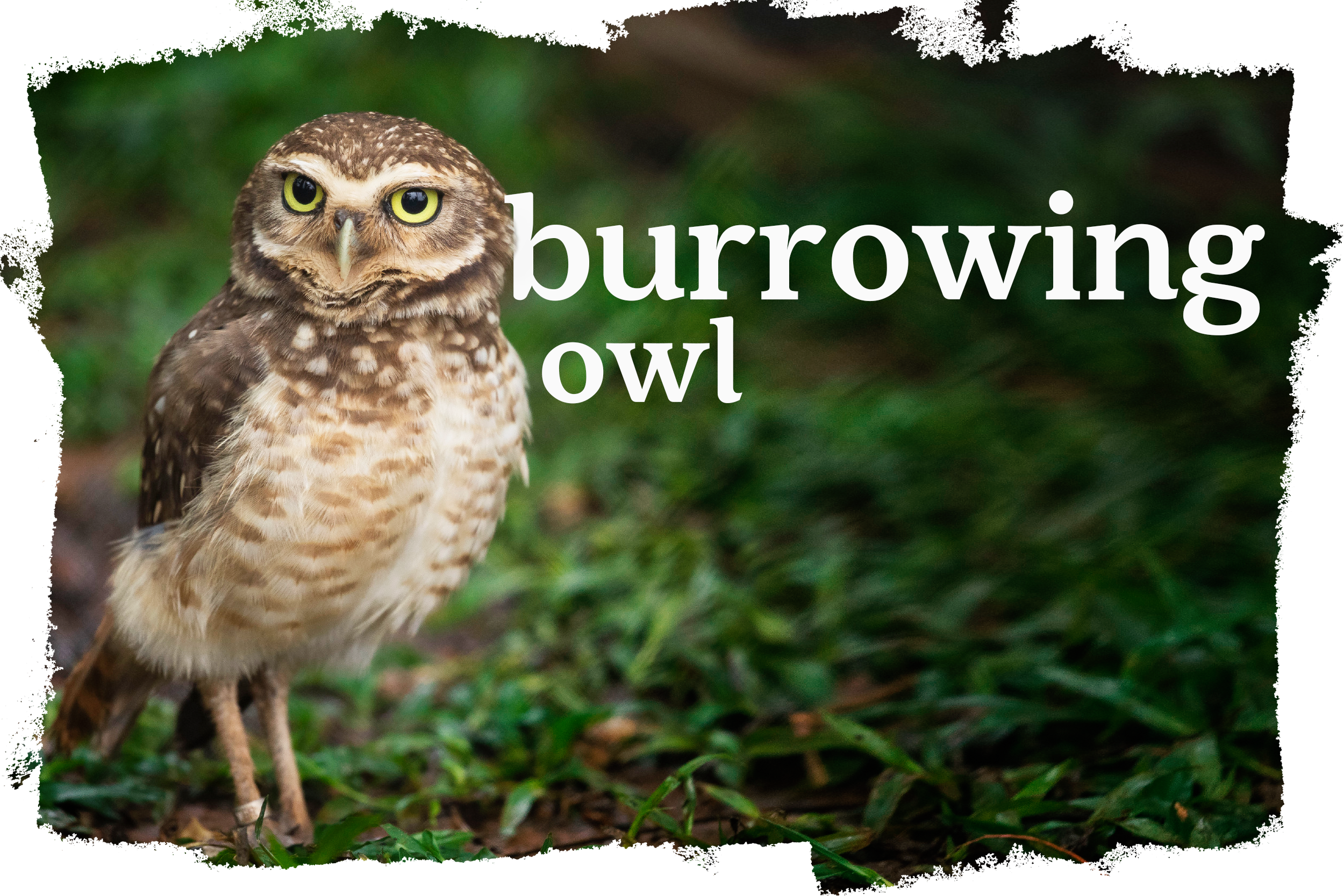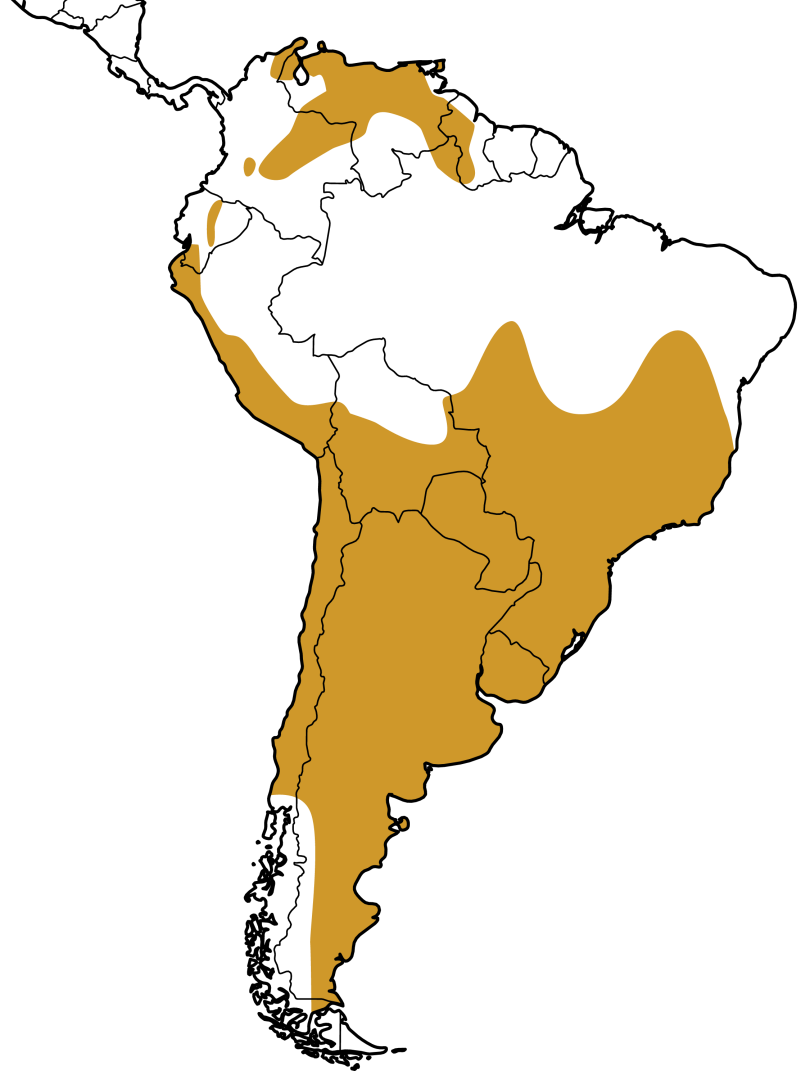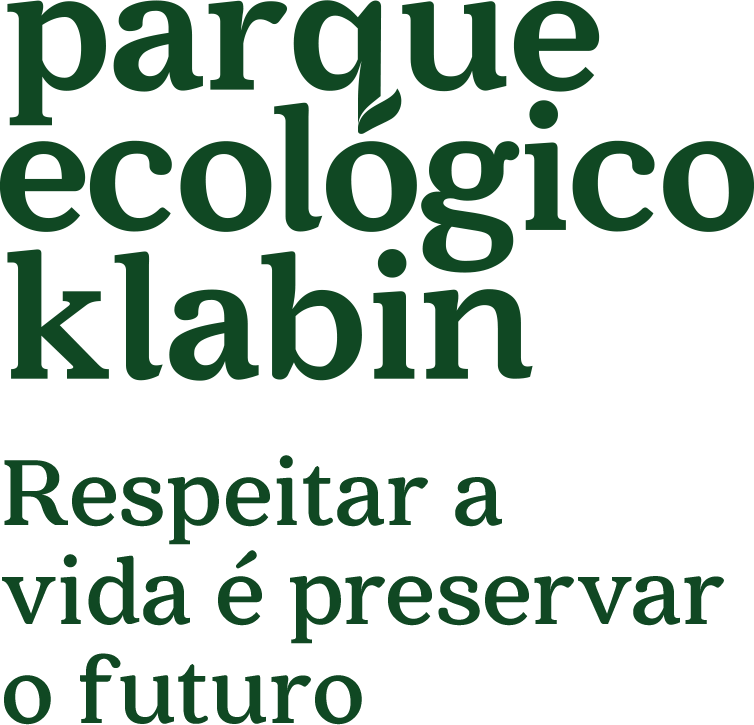Burrowing owl


The burrowing owl is named so because it shelters in holes in fields, forests, and plains. It prefers holes abandoned by other animals, such as armadillos.
110g and 285g
21cm and 27cm
9 years in the wild
Important data
MAIN FEATURES
It has round head, bright yellow eyes, grayish beak, brown wings with various yellow spots. Some of its colors vary. His feet are long, suitable for walking on the ground, usually marching. It has a short tail.
TOP THREATS
Attacks by domestic animals such as cats and dogs, loss of natural habitat and trampling.
DIET
It feeds on small birds, bats, and insects, but prefers rodents.REPRODUCTION
It digs holes 1.5m to 3m deep, and up to 90cm in diameter. The female lays 6 to 11 eggs and the chicks begin to venture out at only 14 days old.BEHAVIOR
● It generally nests on the ground, in flat areas with low-lying vegetation.
● Despite having low nests, it likes to be in high places, such as on post, trunks and walls.
● It is well-adapted to the urban environment and humans.
● It has predominantly daytime habits but shelters at the hottest time of day.
TRIVIA
He has great hearing and sees a hundred times more than a human being. He also has the habit of balancing himself on only one of his legs, a behavior exclusive to this species.
Geographical distribution





